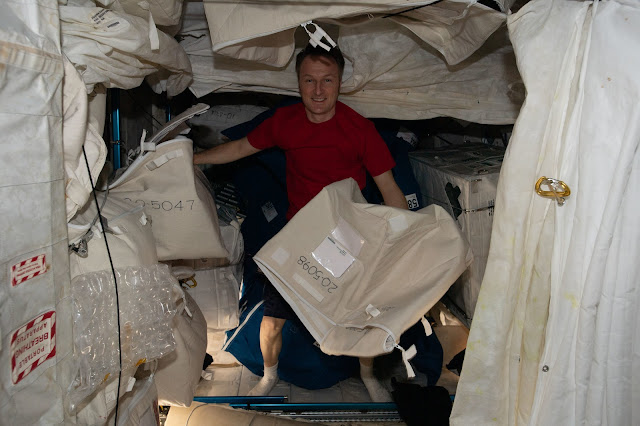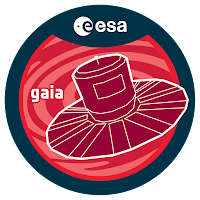ESO - European Southern Observatory logo.
Feb 16, 2022
Galaxy Messier 77 and close-up view of its active centre
The European Southern Observatory’s Very Large Telescope Interferometer (ESO’s VLTI) has observed a cloud of cosmic dust at the centre of the galaxy Messier 77 that is hiding a supermassive black hole. The findings have confirmed predictions made around 30 years ago and are giving astronomers new insight into “active galactic nuclei”, some of the brightest and most enigmatic objects in the universe.
Active galactic nuclei (AGNs) are extremely energetic sources powered by supermassive black holes and found at the centre of some galaxies. These black holes feed on large volumes of cosmic dust and gas. Before it is eaten up, this material spirals towards the black hole and huge amounts of energy are released in the process, often outshining all the stars in the galaxy.
A close-up view of Messier 77’s active galactic nucleus
Astronomers have been curious about AGNs ever since they first spotted these bright objects in the 1950s. Now, thanks to ESO’s VLTI, a team of researchers, led by Violeta Gámez Rosas from Leiden University in the Netherlands, have taken a key step towards understanding how they work and what they look like up close. The results are published today in Nature.
By making extraordinarily detailed observations of the centre of the galaxy Messier 77, also known as NGC 1068, Gámez Rosas and her team detected a thick ring of cosmic dust and gas hiding a supermassive black hole. This discovery provides vital evidence to support a 30-year-old theory known as the Unified Model of AGNs.
Dazzling galaxy Messier 77
Astronomers know there are different types of AGN. For example, some release bursts of radio waves while others don’t; certain AGNs shine brightly in visible light, while others, like Messier 77, are more subdued. The Unified Model states that despite their differences, all AGNs have the same basic structure: a supermassive black hole surrounded by a thick ring of dust.
According to this model, any difference in appearance between AGNs results from the orientation at which we view the black hole and its thick ring from Earth. The type of AGN we see depends on how much the ring obscures the black hole from our view point, completely hiding it in some cases.
Artist’s impression of the active galactic nucleus of Messier 77
Astronomers had found some evidence to support the Unified Model before, including spotting warm dust at the centre of Messier 77. However, doubts remained about whether this dust could completely hide a black hole and hence explain why this AGN shines less brightly in visible light than others.
“The real nature of the dust clouds and their role in both feeding the black hole and determining how it looks when viewed from Earth have been central questions in AGN studies over the last three decades,” explains Gámez Rosas. “Whilst no single result will settle all the questions we have, we have taken a major step in understanding how AGNs work.”
The active galaxy Messier 77 in the constellation of Cetus
The observations were made possible thanks to the Multi AperTure mid-Infrared SpectroScopic Experiment (MATISSE) mounted on ESO’s VLTI, located in Chile’s Atacama Desert. MATISSE combined infrared light collected by all four 8.2-metre telescopes of ESO’s Very Large Telescope (VLT) using a technique called interferometry. The team used MATISSE to scan the centre of Messier 77, located 47 million light-years away in the constellation Cetus.
“MATISSE can see a broad range of infrared wavelengths, which lets us see through the dust and accurately measure temperatures. Because the VLTI is in fact a very large interferometer, we have the resolution to see what’s going on even in galaxies as far away as Messier 77. The images we obtained detail the changes in temperature and absorption of the dust clouds around the black hole,” says co-author Walter Jaffe, a professor at Leiden University.
Wide-field image of the sky around Messier 77
Combining the changes in dust temperature (from around room temperature to about 1200 °C) caused by the intense radiation from the black hole with the absorption maps, the team built up a detailed picture of the dust and pinpointed where the black hole must lie. The dust — in a thick inner ring and a more extended disc — with the black hole positioned at its centre supports the Unified Model. The team also used data from the Atacama Large Millimeter/submillimeter Array, co-owned by ESO, and the National Radio Astronomy Observatory’s Very Long Baseline Array to construct their picture.
“Our results should lead to a better understanding of the inner workings of AGNs,” concludes Gámez Rosas. “They could also help us better understand the history of the Milky Way, which harbours a supermassive black hole at its centre that may have been active in the past.”
Artist’s animation of the active galactic nucleus of Messier 77
The researchers are now looking to use ESO’s VLTI to find more supporting evidence of the Unified Model of AGNs by considering a larger sample of galaxies.
Team member Bruno Lopez, the MATISSE Principal Investigator at the Observatoire de la Côte d’Azur in Nice, France, says: “Messier 77 is an important prototype AGN and a wonderful motivation to expand our observing programme and to optimise MATISSE to tackle a wider sample of AGNs."
The Unified Model of active galactic nuclei
ESO’s Extremely Large Telescope (ELT), set to begin observing later this decade, will also aid the search, providing results that will complement the team’s findings and allow them to explore the interaction between AGNs and galaxies.
More information:
This research was presented in the paper “Thermal imaging of dust hiding the black hole in the Active Galaxy NGC 1068” (doi: 10.1038/s41586-021-04311-7) to appear in Nature.
The team is composed of Violeta Gámez Rosas (Leiden Observatory, Leiden University, Netherlands [Leiden]), Jacob W. Isbell (Max Planck Institute for Astronomy, Heidelberg, Germany [MPIA]), Walter Jaffe (Leiden), Romain G. Petrov (Université Côte d’Azur, Observatoire de la Côte d’Azur, CNRS, Laboratoire Lagrange, France [OCA]), James H. Leftley (OCA), Karl-Heinz Hofmann (Max Planck Institute for Radio Astronomy, Bonn, Germany [MPIfR]), Florentin Millour (OCA), Leonard Burtscher (Leiden), Klaus Meisenheimer (MPIA), Anthony Meilland (OCA), Laurens B. F. M. Waters (Department of Astrophysics/IMAPP, Radboud University, the Netherlands; SRON, Netherlands Institute for Space Research, the Netherlands), Bruno Lopez (OCA), Stéphane Lagarde (OCA), Gerd Weigelt (MPIfR), Philippe Berio (OCA), Fatme Allouche (OCA), Sylvie Robbe-Dubois (OCA), Pierre Cruzalèbes (OCA), Felix Bettonvil (ASTRON, Dwingeloo, the Netherlands [ASTRON]), Thomas Henning (MPIA), Jean-Charles Augereau (Univ. Grenoble Alpes, CNRS, Institute for Planetary sciences and Astrophysics, France [IPAG]), Pierre Antonelli (OCA), Udo Beckmann (MPIfR), Roy van Boekel (MPIA), Philippe Bendjoya (OCA), William C. Danchi (NASA Goddard Space Flight Center, Greenbelt, USA), Carsten Dominik (Anton Pannekoek Institute for Astronomy, University of Amsterdam, The Netherlands [API]), Julien Drevon (OCA), Jack F. Gallimore (Department of Physics and Astronomy, Bucknell University, Lewisburg, Pennsylvania, USA), Uwe Graser (MPIA), Matthias Heininger (MPIfR), Vincent Hocdé (OCA), Michiel Hogerheijde (Leiden; API), Josef Hron (Department of Astrophysics, University of Vienna, Austria), Caterina M.V. Impellizzeri (Leiden), Lucia Klarmann (MPIA), Elena Kokoulina (OCA), Lucas Labadie (1st Institute of Physics, University of Cologne, Germany), Michael Lehmitz (MPIA), Alexis Matter (OCA), Claudia Paladini (European Southern Observatory, Santiago, Chile [ESO-Chile]), Eric Pantin (Centre d'Etudes de Saclay, Gif-sur-Yvette, France), Jörg-Uwe Pott (MPIA), Dieter Schertl (MPIfR), Anthony Soulain (Sydney Institute for Astronomy, University of Sydney, Australia [SIfA]), Philippe Stee (OCA), Konrad Tristram (ESO-Chile), Jozsef Varga (Leiden), Julien Woillez (European Southern Observatory, Garching bei München, Germany [ESO]), Sebastian Wolf (Institute for Theoretical Physics and Astrophysics, University of Kiel, Germany), Gideon Yoffe (MPIA), and Gerard Zins (ESO-Chile).
MATISSE was designed, funded and built in close collaboration with ESO, by a consortium composed of institutes in France (J.-L. Lagrange Laboratory — INSU-CNRS — Côte d’Azur Observatory — University of Nice Sophia-Antipolis), Germany (MPIA, MPIfR and University of Kiel), the Netherlands (NOVA and University of Leiden), and Austria (University of Vienna). The Konkoly Observatory and Cologne University have also provided some support in the manufacture of the instrument.
The European Southern Observatory (ESO) enables scientists worldwide to discover the secrets of the Universe for the benefit of all. We design, build and operate world-class observatories on the ground — which astronomers use to tackle exciting questions and spread the fascination of astronomy — and promote international collaboration in astronomy. Established as an intergovernmental organisation in 1962, today ESO is supported by 16 Member States (Austria, Belgium, the Czech Republic, Denmark, France, Finland, Germany, Ireland, Italy, the Netherlands, Poland, Portugal, Spain, Sweden, Switzerland and the United Kingdom), along with the host state of Chile and with Australia as a Strategic Partner. ESO’s headquarters and its visitor centre and planetarium, the ESO Supernova, are located close to Munich in Germany, while the Chilean Atacama Desert, a marvellous place with unique conditions to observe the sky, hosts our telescopes. ESO operates three observing sites: La Silla, Paranal and Chajnantor. At Paranal, ESO operates the Very Large Telescope and its Very Large Telescope Interferometer, as well as two survey telescopes, VISTA working in the infrared and the visible-light VLT Survey Telescope. Also at Paranal ESO will host and operate the Cherenkov Telescope Array South, the world’s largest and most sensitive gamma-ray observatory. Together with international partners, ESO operates APEX and ALMA on Chajnantor, two facilities that observe the skies in the millimetre and submillimetre range. At Cerro Armazones, near Paranal, we are building “the world’s biggest eye on the sky” — ESO’s Extremely Large Telescope. From our offices in Santiago, Chile we support our operations in the country and engage with Chilean partners and society.
Links:
Uncovering a Black Hole in an Immense Dust Cloud (ESOcast 251 Light)
https://www.eso.org/public/videos/eso2203a/
Research paper: https://www.eso.org/public/archives/releases/sciencepapers/eso2203/eso2203a.pdf
Photos of the VLT/VLTI: http://www.eso.org/public/images/archive/category/paranal/
For journalists: subscribe to receive our releases under embargo in your language: https://www.eso.org/public/outreach/pressmedia/#epodpress_form
For scientists: got a story? Pitch your research: http://www.eso.org/sci/publications/announcements/sciann17463.html
ESO’s Extremely Large Telescope (ELT): https://elt.eso.org/
Images Credits: ESO/Jaffe, Gámez-Rosas et al./ESO/M. Kornmesser and L. Calçada/ESO, IAU and Sky & Telescope/NASA/ESA, Digitized Sky Survey 2/Videos Credits: ESO/M. Kornmesser and L. Calçada and M. Kornmesser/Text, Credits: ESO/Bárbara Ferreira/MATISSE Project Scientist, Observatoire de la Côte d’ Azur, Nice/Romain Petrov/MATISSE Principal Investigator/Bruno Lopez/Leiden University/Walter Jaffe/Violeta Gámez Rosas.
Best regards, Orbiter.ch











































